More influencers are using AI, but not all are transparent about it; which might put brands at risk. One of our goals is to foster more openness in influencer marketing and prevent audiences from feeling misled. We believe brands have a role in encouraging ethical AI use by asking for clear disclaimers. Through this article, we want to help marketers adopt that mindset by adjusting their principles, values, and internal guidelines, so that honesty and authenticity remain at the center of every collaboration.
As AI-generated content becomes more common in influencer marketing, transparency matters more than ever. Both platforms and regulators are starting to push for clearer labeling of synthetic content, and that shift has real implications for brands. This article explains what AI disclaimers are, where they’re heading, and why marketers should start paying attention now.
According to a survey, 63% of influencer marketers plan to use AI in 2025. Hence, it’s expected that we’ll see more brands are, at least, getting their feet wet into AI usage. As a result, we can expect more brands to, at least, experiment with AI.
There are several reasons why brands are increasingly turning to AI tooI in influencer marketing instead of going full manual. These include reducing production time, achieving cost efficiency, and maintaining consistency.
However, not all brands clearly disclose their use of AI, even when AI-generated content is served to audiences - despite the fact that consumers strongly prefer transparency. This has been proven by Q2 2024 Sprout Pulse Survey, which found that 94% of consumers believe all AI content should be disclosed. Yet, many brands still hesitate to include AI disclaimers in their marketing content due to different reasons, such as unclear regulations, concerns about audience perception, or assumption that minor AI use doesn’t need disclosure. With different levels of AI adoption and varying legal frameworks, brands often find themselves standing in a gray area.
That said, choosing to disclose AI usage is likely to do more good than harm. In this case, brands that are transparent about their AI involvement are more likely to dodge some bullets: legal issues, loss of credibility, and loss of trust. How so?
Let's have a thorough discussion on AI disclaimers, starting with understanding what they actually are, why brands should care about them, and how they can maintain transparency in their campaigns.
Key takeaways:
A survey found that 94% of consumers believe all AI content should be disclosed.
Clear disclaimers help protect brand reputation and maintain authenticity with audiences.
Platforms like YouTube and TikTok are introducing rules requiring AI content disclosures.
Failing to label AI-generated content can harm trust and lead to compliance risks.
When working with AI influencers, state their synthetic nature in every post to keep the story clear.
What is AI Disclaimer?
 AI disclaimer is a statement that informs the audience about the involvement of artificial intelligence in the creation or modification process of content, services, or product. This involvement can be described as AI-assisted or entirely AI-generated. Such statements are usually provided by brands, social media platforms, or even individuals, in order to maintain transparency in influencer marketing and prevent audiences from feeling deceived, further building trust with them. Clearly stating AI usage also proves brands’ compliance with legal and ethical standards.
AI disclaimer is a statement that informs the audience about the involvement of artificial intelligence in the creation or modification process of content, services, or product. This involvement can be described as AI-assisted or entirely AI-generated. Such statements are usually provided by brands, social media platforms, or even individuals, in order to maintain transparency in influencer marketing and prevent audiences from feeling deceived, further building trust with them. Clearly stating AI usage also proves brands’ compliance with legal and ethical standards.
You may have come across AI disclaimers in the form of hashtags, like in the screenshot above, or as sentences such as:
“This content was generated with the assistance of AI.”
“Some elements of this post were created using AI tools.”
“This image was created using AI tools.”
“Content generated using artificial intelligence technology, with human editing applied for accuracy and clarity.”
Now you might be wondering, when is the time to use an AI disclaimer? Well, it’s best to include disclaimer, at the very least, whenever AI has a significant portion in creating content. This means content that is very reliant on AI systems such as AI-generated images, social media captions, or even articles. However, content with minimal use of AI such as proofreading or providing suggestions, the decision depends on the final output. How much of the AI’s input was used? Is it obvious that it is AI-generated content?
One important thing to remember is that AI disclaimers are especially important when sharing sensitive or high-stakes information in a content. This is particularly relevant for YMYL (Your Money Your Life) content, meaning topics that could impact a person's health, safety, financial stability, or well-being in real life.
Why it’s important and how it affects influencer marketing
Now that we understand what an AI disclaimer is, it’s important to recognize why brands should acknowledge it and consider using it. The first and most crucial reason is for the sake of maintaining audience trust.
Let’s learn from the controversy surrounding Marvel’s Secret Invasion series back in 2023. The studio didn’t publicly state its use of AI in creating the opening title, which then sparked criticism, especially from artists and creatives. A brand that big using AI without a disclaimer left many feeling disappointed and misled.
When we bring AI disclaimer into the influencer marketing context, the importance and impact remain similar:
1. Maintaining transparency and consumer trust
Honesty and authenticity are the soul of influencer marketing. Even when brands use AI in their campaigns, they can still uphold these values. By openly stating that AI was involved in content creation, brands help customers understand better about how they’re using modern technology without compromising trust. Many brands that disclose AI usage have seen their campaigns perceived more positively compared to those that use AI in secret.
2. Practicing ethical marketing
Providing disclaimer on AI usage means adopting ethical marketing practices. It promotes transparency and accountability by informing audiences about the nature of the content they consume. This prevents consumers from feeling deceived and reinforces a brand’s responsibility in publishing AI-generated content.
3. Complying with AI regulation
While there’s currently no universal law requiring AI disclaimers, some countries and regions already introduced regulations mandating brands to notify consumers when AI is used in content. Getting used into the habit of including AI disclaimers helps brands stay ahead of potential legal requirements and avoid penalties. Further, this also prevents brands from potential risks such as damaging their reputation and long-term sustainability.
How different platforms apply AI disclaimer
The Q2 2024 Sprout Pulse Survey also revealed a debate about who actually should be responsible for AI disclosures. 33% believe it should be brands’ responsibility, 29% think it’s the social network, while 17% are sure brands, social network, and social media management platforms share the same level of responsibility.
With this in mind, various major platforms have already implemented AI disclaimer to prevent misunderstandings and maintain public trust. Most of them provide features that help creators label their content as AI-generated or AI-altered. This can be interpreted as their accountability effort in safeguarding ethical considerations in using AI. Brands should stay informed about these policies, as they can directly impact influencer marketing efforts.
Here are some examples of how different platforms apply AI disclaimers:
Meta
 Image Source: Meta
Image Source: Meta
Since 2024, Meta has required users to disclose AI-generated content on Instagram, Facebook, and Threads. In July 2024, the company changed its AI labeling system by changing the “Made with AI” label to “AI info” across their apps, which people can click for more information. They also have added the label “Imagined with AI” to photorealistic images created using Meta AI feature. These efforts aim to enhance transparency and provide clearer context for AI-generated content.
TikTok
 Image Source: TikTok Newsroom
Image Source: TikTok Newsroom
As a leading global platform for short-form video content with a billion active users, TikTok jumped into the AI disclaimer application on April 21, 2023. Under TikTok’s Community Guidelines, the synthetic media policy requires people to label AI generated content that contains realistic images, audio, or video. This helps viewers understand the nature of the content and prevents the potential spread of misleading information. If creators fail to disclose AI usage by themselves, TikTok may automatically put an “AI-generated” label to content detected as edited or created by AI. Further, they also renamed TikTok AI effects to explicitly include “AI” in their names to give more clarity around their AI-powered features.
YouTube
 Image Source: YouTube
Image Source: YouTube
YouTube has transparency tools in Creator Studio to encourage creators to self-disclose when they share synthetic or heavily altered content that appears real, including AI-generated media. This is meant to prevent viewers from mistaking such content for real people, places, or events. These labels appear in both the video description and video player window (for sensitive topics such as health, news, elections, or finance). If there’s no disclosure, YouTube may apply labels to some videos, especially those covering sensitive subjects. This reflects how social platforms participate in taking responsibility for AI transparency.
 Image Source: LinkedIn
Image Source: LinkedIn
The professional networking platform LinkedIn has implemented AI disclaimers by adopting the C2PA (Coalition for Content Provenance and Authenticity) standard, known as Content Credentials. This feature not only serves as an AI disclaimer, but also provides detailed information about a content’s history and origin, such as the software or devices used to create it. By applying this policy, LinkedIn aims to keep the platform safe, trusted, and professional. Thus, any violation of this policy can be reported.
How to start using AI disclaimer in your influencer marketing campaigns
With more marketers and influencers embracing AI in content creation, it’s time to consider how to be honest about it without losing consumer trust. While companies are often more keen about AI-driven products than their customers, hiding AI involvement is not an option; moreover when it’s clearly visible to the public.
Even the prominent creative agency, Ogilvy, launched the AI Accountability Act in 2023 which urges brands to clearly disclose and publicly declare the use of any AI-generated influencer content by using hashtag #poweredbyAI or implementing watermarks. Starting June 19, 2023, Ogilvy mandated this initiative across its global business. This has made Ogilvy the first agency to reach this level of AI transparency in the industry.
Now, with increasing awareness, here’s how brands can join the initiative:
Stay upfront about using AI tools to influencers
With so many AI tools being used by marketers, it’s important to be transparent about how your influencer marketing campaigns are carried out. Before informing your audience, brands should always start communicating openly with the influencers themselves.
For example, if your brand uses a platform that generates AI-created briefs or campaign summaries for influencers, be upfront about it when reaching out. Let them know that the brief you sent to them was AI-generated. Similarly, if you're providing AI-generated captions or images, disclose this information from the very beginning.
Combine labels on social media
Disclosing sponsored posts is now a standard practice, and as a brand, you've likely done it countless times. But if you’re running a campaign with an influencer who uses AI for content creation, it’s best to disclose both aspects: it’s a sponsored post, AND it’s AI-generated. While the latter is still uncommon for many brands, it would be a wise approach.
If an influencer shares AI-generated content while promoting your product or service on social media, there’s an agreement in place requiring them to disclose both disclaimers, even if it’s minor use (if it aligns with your brand). This can be done by including a brief AI transparency note in influencer contracts or scope of work (SOW) since the very start to avoid misunderstandings.
Fortunately, combining these disclaimers is even easier since - as we explained - many social media platforms offer both sponsored and AI content labels. For example, Instagram’s Branded Content Tools display a “Paid partnership with [brand name]” tag below the username, along with an “AI info” label for content that has been generated or heavily modified using AI. Using these labels ensure your influencers comply with Instagram's guidelines while maintaining transparency with their followers.
If you want more clarity, use common hashtags such as #sponsored or #partnership, combined with some other clear hashtags that indicate AI usage, like #AIgenerated, #madewithAI, or #poweredbyAI - as promoted by Ogilvy.
Notify people that you’re partnering with AI influencers
Probably, the most common forms of AI disclosure in influencer marketing is the use of AI influencers. For years, brands have collaborated with virtual influencers to add a futuristic and innovative touch to their campaigns. For example, Lil Miquela has worked with brands like Prada, Puma, Mini Cooper, and BMW. Meanwhile, Aitana Lopez, a virtual influencer with passion in gaming and fitness, has posted for Nike and Fortnite.
Most of these campaigns have been transparent about their AI involvement, mostly because AI influencers themselves disclose their nature. Many include disclaimers in their bios stating they’re not real people, with descriptions like “a robot girl from LA” or “virtual girl in Japan” to highlight their artificial nature. This self-disclosure has made these campaigns indirectly transparent.
 However, even though AI influencers openly publish their AI-generated identity, it’s always better to make this clear from the brand’s side. A great example is Coach’s “Courage to Be Real” campaign featuring Imma, a Japanese virtual influencer, where they explicitly stated Imma’s nature as a virtual human. Instead of making the campaign feel inauthentic, this openness helped build trust and understanding among customers.
However, even though AI influencers openly publish their AI-generated identity, it’s always better to make this clear from the brand’s side. A great example is Coach’s “Courage to Be Real” campaign featuring Imma, a Japanese virtual influencer, where they explicitly stated Imma’s nature as a virtual human. Instead of making the campaign feel inauthentic, this openness helped build trust and understanding among customers.

Looking ahead
AI usage cannot be stopped because it makes everything faster and easier, and embracing AI technology is definitely not a sin. However, to ensure that audiences and customers don’t feel betrayed by the decision of using AI (that is still negatively perceived by some people), these ideas may help guide your decisions:
Being transparent doesn’t weaken your campaign; it builds credibility.
Brands need to audit their content and workflows to spot where AI is involved.
Start preparing messaging and disclosure practices before regulations make them mandatory.
Talk openly with creators about how you use AI so they can mirror the same disclosure in their content.
Partner with influencers who understand and respect these new norms because it reflects back on you.
While being honest about AI usage is important, relying too heavily on it can compromise authenticity. No matter how transparent we are, keeping human creativity at the heart of every project is something that should never be replaced.













